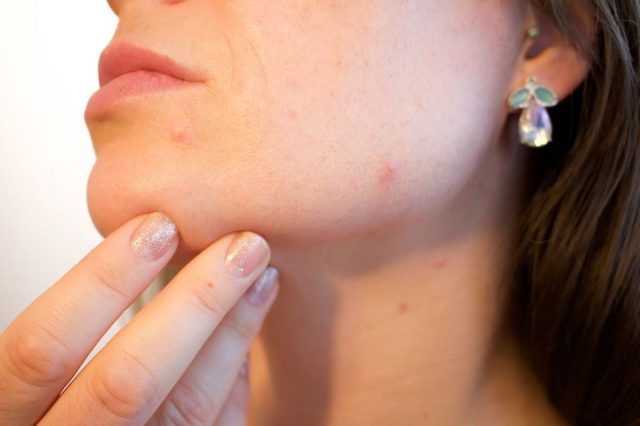Those painful, pesky and unpleasant pimples that show up just before a vacation or a wedding – yeah, that’s what a nightmare looks like!
Well, you are not alone who has faced this situation. While at puberty, pimples, whiteheads, and blackheads are normal, but the problem arises when these spots occur beyond the teenage years as well.
Well, this is hormonal acne, which occurs due to the changes in your hormones. It is caused by the fluctuations of progesterone and estrogen, which both vary widely throughout the menstrual cycle. Stress hormones can also affect these hormones.
Symptoms of Hormonal Acne
Hormonal acne in teenagers usually occurs on the nose, chin, and forehead. But it can be seen in the adults around the jawline and bottom of the cheeks.
Hormonal acne can be of two types – whiteheads and blackheads. Blackheads are comedones that are open at the skin’s surface and appear black due to the effect on oxygen on them. Whiteheads are comedones that are closed beneath the surface of the skin.
Hormonal acne can also occur as:
- Pustules: small, red pus-filled pimples
- Papules: raised, small, red bumps that occur due to the inflammation or infection of the hair follicles
- Cysts: Cysts are large lumps that are present under the skin. They contain pus and can be painful.
How to Treat Hormonal Cystic Acne?
Whether you have a cheek full of deep zits or a forehead of whiteheads, dealing with acne can be tough and daunting, all thanks to its scary treatments. But if you have mild hormonal acne, it can be treated with some oral contraceptives or anti-androgen drugs.
Here are some ways to stop hormonal acne.
- Anti-androgen drugs:
These drugs reduce the androgen hormones and thus, subsiding the production of sebum. Excessive androgen causes acne by increasing sebum production.
Spironolactone is used to treat hormonal acne as it has anti-androgen effects. However, Spironolactone is not appropriate for all women, so make sure you consult your doctor before its consumption.
- Oral Contraceptives:
Oral contraceptives can also be used to treat acne. The pills should contain ethinylestradiol along with drospirenone, norethindrone, and norgestimate.
These ingredients target the acne-causing hormones and are particularly helpful at the times of hormonal peaks, such as at the time of ovulation. But you must not take oral contraceptives if you have a history of breast cancer, high blood pressure, and blood clots. Also, avoid them if you smoke.
- Retinoids:
Topical retinoids, a derivative of vitamin A, can also be used to treat hormonal acne.
Retinoids come in the form of gels, creams, and lotions but you should get a prescription-strength product from the dermatologist as it is the most efficient way to treat this problem.
- Natural treatment:
Plant-based treatment options can also clear up your acne. Although these treatments are free of side effects of other options, these may not be as effective. The natural treatments include tea tree oil, alpha hydroxyl acid, and green tea.
Some More Tips for People with Acne
- Wash your face twice daily with mild face wash and follow up with an overnight facemask.
- Don’t apply too much acne product as it can dry out your skin. A pea-sized amount would suffice.
- Don’t skip your sunscreen.
- Avoid scrubbing, scraping, or picking pimples.
- Add only non-comedogenic products to your routine to prevent the clogging of pores.
Final Words
Hormonal acne is annoying! But, you can easily get rid of it. Follow the tips mentioned above and revise your current regimes with appropriate products.
But if your acne persists for a long time, perhaps it’s time for you to consult a good dermatologist.

A professional writer with over a decade of incessant writing skills. Her topics of interest and expertise range from health, nutrition and psychology.




